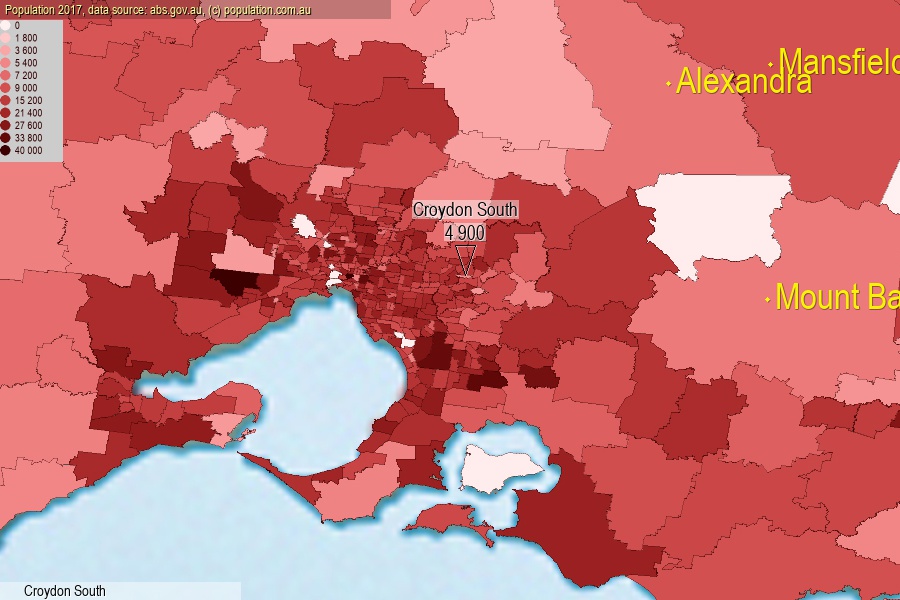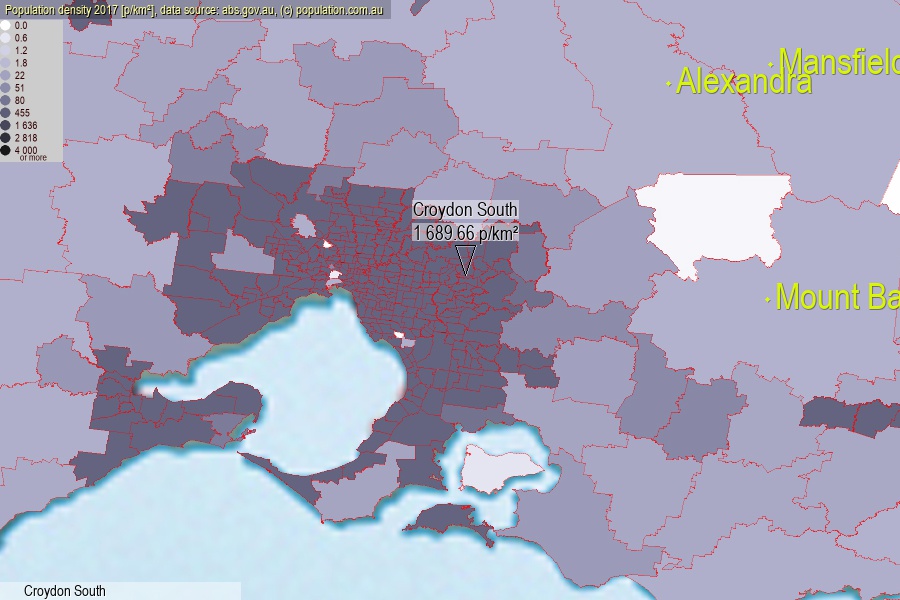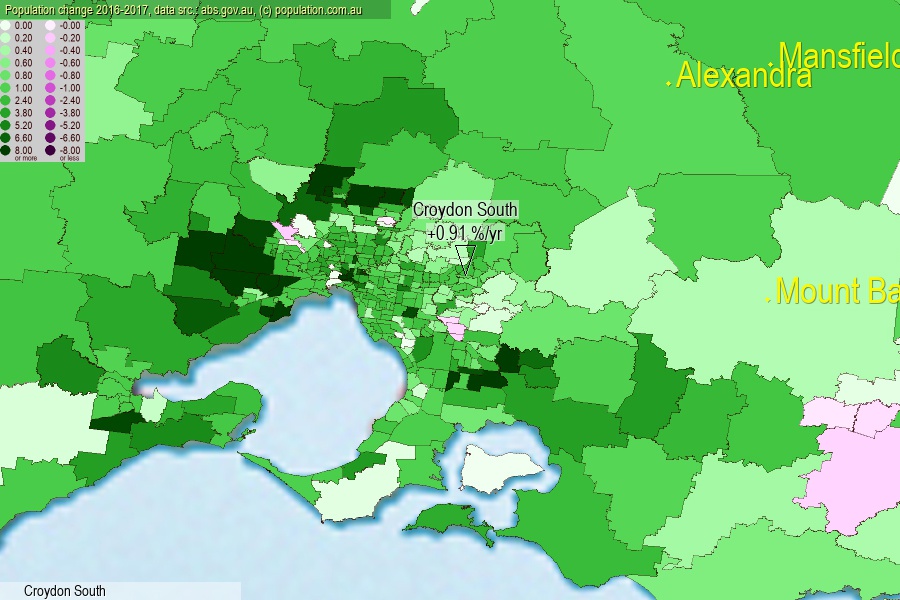 population.com.au
population.com.auLast official estimated population of Croydon South (as Statistical Area Level 2) was 4 900 people (on 2017-06-30)[2]. This was 0.02% of total Australian population and 0.076% of VIC population. Area of Croydon South is 2.90 km², in this year population density was 1 689.66 p/km² . If population growth rate would be same as in period 2016-2017 (+0.91%/yr), Croydon South population in 2025 would be 5 267. [0]



Click to enlarge. Croydon South is located in the center of the images.
Population [people], population density [p./km²] and population change [%/year] [2]
View borders » (new window) [4]
[2001-2002] -1.01 %/Yr.
[2002-2003] -0.95 %/Yr.
[2003-2004] -0.46 %/Yr.
[2004-2005] -0.48 %/Yr.
[2005-2006] -0.12 %/Yr.
[2006-2007] +1.32 %/Yr.
[2007-2008] +1.87 %/Yr.
[2008-2009] +2.35 %/Yr.
[2009-2010] +1.60 %/Yr.
[2010-2011] +0.67 %/Yr.
[2011-2012] +0.30 %/Yr.
[2012-2013] +0.77 %/Yr.
[2013-2014] +1.21 %/Yr.
[2014-2015] +0.82 %/Yr.
[2015-2016] +0.66 %/Yr.
[2016-2017] +0.91 %/Yr.
[0] Calculated with linear interpolation from officially estimated population
[1] Read more about SA2 and Australian Statistical Geography Standard (ASGS) on abs.gov.au
[2] Population data from Australian Bureau of Statistics (Population and density: 2017; change: 2016-2017)
[3] Digital Boundaries: Australian Statistical Geography Standard (ASGS) 2016.
[4] Border coordinates are simplifyed using Ramer-Douglas-Peucker algorithm.